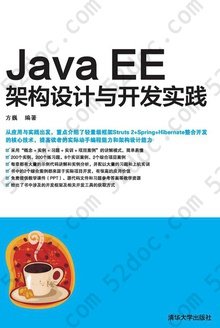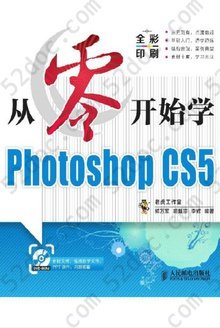注重体验与质量的电子书资源下载网站
分类于: 设计 云计算&大数据
简介

Simple and Usable Strategies for Interaction Design 豆 8.3分
资源最后更新于 2020-11-12 04:35:01
作者:[英] Giles Colborne
出版社:New Riders Press
出版日期:0000-01
ISBN:9780321703545
文件格式: pdf
标签: 交互设计 产品设计 用户体验 设计 design interaction-design UX English
简介· · · · · ·
In a complex world, products that are easy to use win favor with consumers. This is the first book on the topic of simplicity aimed specifically at interaction designers. It shows how to drill down and simplify user experiences when designing digital tools and applications. It begins by explaining why simplicity is attractive, explores the laws of simplicity, and presents prove...
目录
Part 1
Why are we here?
A story about simplicity
The power of simplicity
Increasing complexity is unsustainable
Not that kind of simple
Character
Fake simplicity
Know yourself
Part 2
Setting a vision
Two ways to describe what’s core
Get out of your office
What to look for
Three types of user
Why you should ignore expert customers
Design for the mainstream
What mainstreamers want
Emotional needs
Simplicity is about control
Choosing the right “what”
Describing the user experience
Putting it all together
World, character, Extreme usability
The quick and dirty way
Insight
Getting the right vision
Share it
Part 3
Four strategies for simplicity
Simplify this
The remote control
The four strategies
Part 4
Remove
Remove
How not to do it
Focus on what’s core
Kill lame features
What if the user…?
But our customers want it
Solutions, not processes
When features don’t matter
Will it hurt?
Prioritizing features Load Decisions
Distractions
Smart defaults
Options and preferences
When one option is too many
Errors
Visual clutter
Removing words
Simplifying sentences
Removing too much
You can do it
Focus
Part 5
Organize
Organize
Chunking
Organizing for behavior
Hard edges
Alphabets and formats
Search
Time and space
Grids
Size and location Layers
Color coding
Desire paths
Part 6
Hide
Hide
Infrequent but necessary
Customizing
Automatic customization
Progressive disclosure
Staged disclosure
X doesn’t mark the spot
Cues and clues
Making things easy to find
After you hide
Part 7
Displace
Displace
Displacing between devices
Mobile vs. desktop
Displacing to the user
What users do best
Creating open experiences
Kitchen knives and pianos
Unstructured data
Trust
Part 8
Before we go
Conservation of complexity
Details
Simplicity happens in the user’s head
Photo Credits 186
Index 189
Why are we here?
A story about simplicity
The power of simplicity
Increasing complexity is unsustainable
Not that kind of simple
Character
Fake simplicity
Know yourself
Part 2
Setting a vision
Two ways to describe what’s core
Get out of your office
What to look for
Three types of user
Why you should ignore expert customers
Design for the mainstream
What mainstreamers want
Emotional needs
Simplicity is about control
Choosing the right “what”
Describing the user experience
Putting it all together
World, character, Extreme usability
The quick and dirty way
Insight
Getting the right vision
Share it
Part 3
Four strategies for simplicity
Simplify this
The remote control
The four strategies
Part 4
Remove
Remove
How not to do it
Focus on what’s core
Kill lame features
What if the user…?
But our customers want it
Solutions, not processes
When features don’t matter
Will it hurt?
Prioritizing features Load Decisions
Distractions
Smart defaults
Options and preferences
When one option is too many
Errors
Visual clutter
Removing words
Simplifying sentences
Removing too much
You can do it
Focus
Part 5
Organize
Organize
Chunking
Organizing for behavior
Hard edges
Alphabets and formats
Search
Time and space
Grids
Size and location Layers
Color coding
Desire paths
Part 6
Hide
Hide
Infrequent but necessary
Customizing
Automatic customization
Progressive disclosure
Staged disclosure
X doesn’t mark the spot
Cues and clues
Making things easy to find
After you hide
Part 7
Displace
Displace
Displacing between devices
Mobile vs. desktop
Displacing to the user
What users do best
Creating open experiences
Kitchen knives and pianos
Unstructured data
Trust
Part 8
Before we go
Conservation of complexity
Details
Simplicity happens in the user’s head
Photo Credits 186
Index 189








